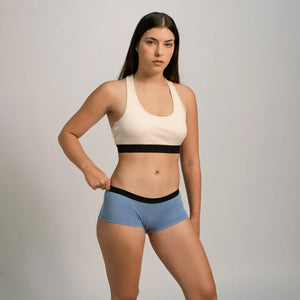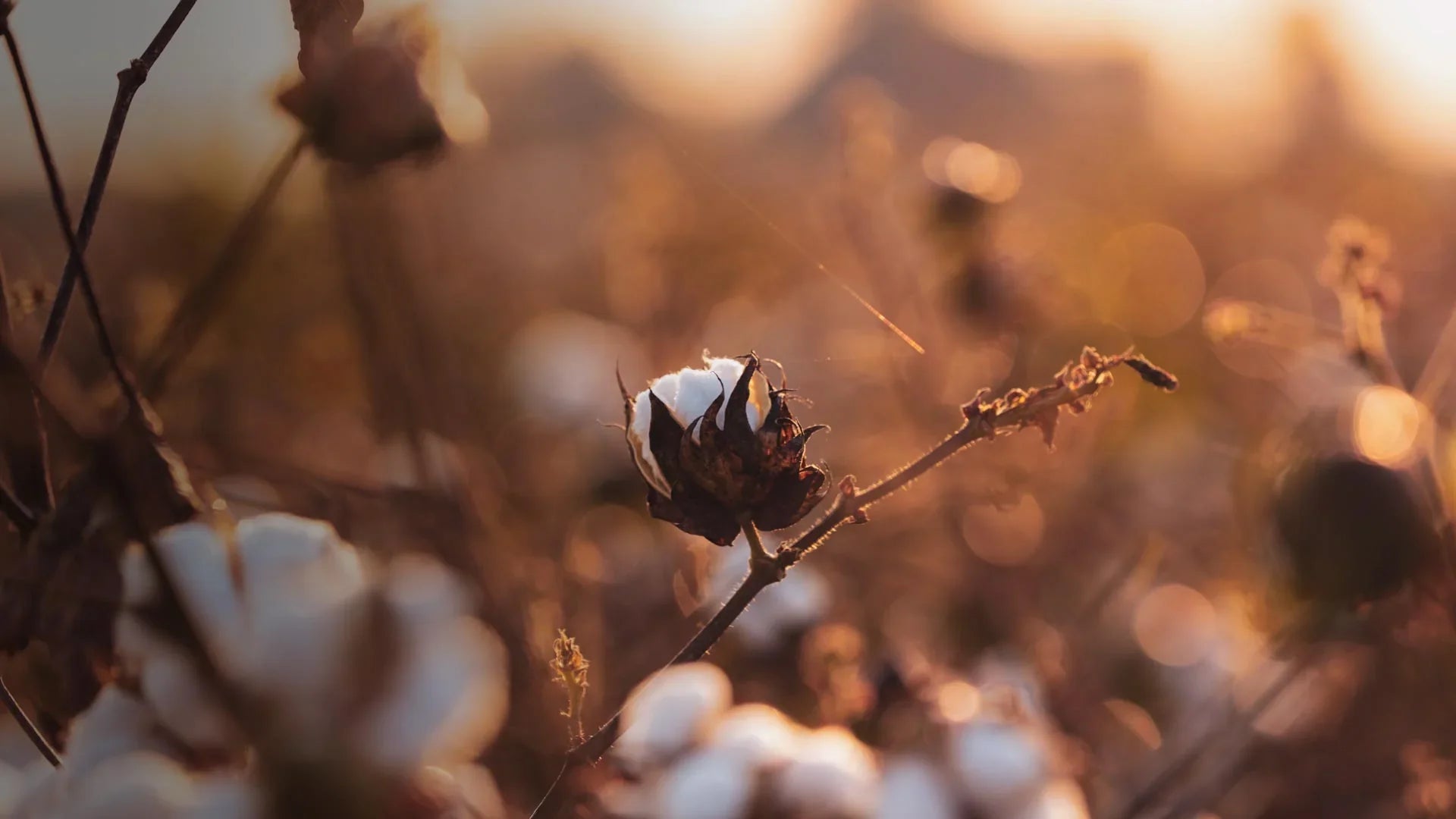Lyocell: The Sustainable Fiber Revolution – Promises and Challenges
Picture by NewAfrica
AYA | DECEMBER 10, 2024
READING TIME: 5 minutes
In today’s quest for sustainable fashion, Lyocell has emerged as a shining star. Known for its eco-friendly manufacturing process and exceptional performance, this man-made cellulosic fiber is often hailed as the future of sustainable textiles. But is it as perfect as it seems? Let’s dive into the world of Lyocell to uncover its benefits, challenges, and potential.
What Makes Lyocell Special?
Lyocell, often marketed under the brand name Tencel™, is made primarily from wood pulp, typically derived from eucalyptus and beech trees. Unlike conventional rayon, which involves harsh chemical processes, Lyocell is produced using NMMO (N-methylmorpholine-N-oxide) in a closed-loop system. This process recycles 99% of the solvent, reducing waste and minimizing environmental harm [1].
The resulting fabric is biodegradable, breathable, and highly durable [1,2]. It absorbs moisture efficiently, making it ideal for activewear, casual wear, medical textiles like bandages and even underwear, thanks to its softness and ability to prevent bacterial growth [3]. It’s no wonder that brands like Patagonia and H&M have begun incorporating Lyocell in their collections.

Picture by Croft Mill.
A New Sustainable Frontier: Recycling Cotton into Lyocell
One of the most exciting advancements in Lyocell production is the potential to recycle used cotton garments—even those that are dyed—into new Lyocell fibers. Research has shown that waste cotton can be chemically processed to remove dyes, finishing agents, and impurities, making it suitable for Lyocell manufacturing. This method not only reduces the amount of textile waste sent to landfills but also creates high-quality regenerated fibers that perform as well as traditional Lyocell [4].
By reusing old cotton garments, Lyocell offers a pathway to circular fashion, transforming discarded textiles into new, eco-friendly products.

Picture by Organic Textiles.
The Environmental Edge
One of Lyocell’s most appealing features is its low environmental footprint compared to other popular fibers:
- Water Usage: Producing Lyocell consumes far less water than cotton, which requires around 8,000 liters to produce just 1 kilogram of fabric [3].
- Biodegradability: Unlike polyester, a petroleum-based fiber, Lyocell naturally decomposes, making it a sustainable option at the end of its lifecycle.
- Energy Efficiency: Its closed-loop production process is less energy-intensive than traditional methods used for viscose or polyester, with almost no toxic by-products.

The Challenges: Not All That Glitters Is Green
While Lyocell is an impressive step forward, it’s not without its challenges:
- High Costs: The advanced technology required for Lyocell’s production drives up costs, making it less accessible for consumers compared to polyester or cotton [1]. As production scales, these costs may drop, but for now, it remains a premium product.
- Chemical Risks: Although NMMO is mostly recycled during production, it is chemically unstable and poses safety concerns if not managed carefully [3]. This adds complexity to its manufacturing and raises questions about potential risks in poorly regulated facilities.
- Ecotoxicity: Studies have shown that microfibers shed from Lyocell garments can accumulate in soils, affecting organisms like earthworms. While less harmful than synthetic fibers, Lyocell microfibers still disrupted the growth and reproduction of worms, highlighting the need for more research on its long-term ecological effects [5].
- Deforestation Concerns: Although Lyocell uses wood from sustainably managed forests, the increasing demand for cellulose-based fibers could pressure natural ecosystems, leading to deforestation if not carefully monitored [6].

A Rival to Cotton and Polyester?
Lyocell’s eco-credentials are undeniable, but how does it compare to the reigning champions of the textile world?
- Cotton: While breathable and widely used, cotton is a water-intensive crop. It also relies heavily on pesticides, which harm ecosystems and human health. Lyocell offers a greener alternative with similar comfort and versatility.
- Polyester: As a petroleum-based product, polyester is energy-intensive and non-biodegradable. Although cheaper, its environmental impact is significant, giving Lyocell a clear edge in sustainability.
However, Lyocell’s current high price point limits its ability to compete directly with these fibers on a mass scale.
Looking Ahead: The Future of Lyocell
Lyocell represents a promising future for sustainable fashion, but there is room for improvement:
- Enhancing production methods to further reduce costs and environmental risks.
- Investigating alternatives to NMMO to ensure even safer processes.
- Addressing the potential environmental impact of microfiber shedding through better waste management and innovative fabric finishes.
For brands like AYA, which prioritize eco-friendly materials like sustainable alpaca wool and cotton, Lyocell serves as both a benchmark and a competitor. While it offers undeniable benefits, it’s essential to evaluate its impact critically, balancing innovation with responsibility.
As consumers, staying informed about the materials we choose is key to driving positive change in the fashion industry. Whether it’s Lyocell, alpaca wool, or cotton, every choice counts in building an environmentally conscious future.
Lyocell may be the fabric of the future, but its journey toward perfection continues. Until then, alternatives like those offered by AYA remain steadfast in their commitment to sustainability and ethical production.
Glossarykeywords
Biodegradability:
The ability of a material to decompose naturally by microorganisms, leaving no harmful residues.
Cellulose:
A natural polymer found in plant cell walls, forming the basis of fibers like cotton, rayon, viscose, and Lyocell. It is renewable and biodegradable.
Circular Fashion:
A sustainable approach to fashion that focuses on recycling materials to reduce waste. Lyocell production from recycled cotton garments is a step toward circular fashion.
Closed-Loop System:
A production process where resources like water or solvents are continuously recycled and reused, minimizing waste and environmental impact. The Lyocell process uses this system to recover 99% of the NMMO solvent.
Deforestation:
The clearing or thinning of forests, often for agriculture or industrial use, which can lead to loss of biodiversity and environmental harm.
Eucalyptus and Beech Trees:
Fast-growing trees commonly used as a source of wood pulp for manufacturing Lyocell due to their high cellulose content and minimal need for pesticides or fertilizers.
Microfibers:
Tiny fibers shed from textiles during wear or washing.
NMMO (N-Methylmorpholine-N-Oxide):
A solvent used in the Lyocell production process to dissolve cellulose, valued for its recyclability but requiring careful handling due to its chemical instability.
Polyester:
A synthetic fiber made from petroleum-derived polymers. Polyester is non-biodegradable, energy-intensive to produce, and widely used in the textile industry for its durability, wrinkle resistance, and affordability.
Rayon:
A semi-synthetic fiber made from cellulose, often produced using environmentally harmful processes.
Viscose:
A type of rayon that undergoes a chemical-heavy production process, resulting in significant environmental concerns compared to Lyocell.
Glossarykeywords
Biodegradability:
The ability of a material to decompose naturally by microorganisms, leaving no harmful residues.
Circular Fashion:
A sustainable approach to fashion that focuses on recycling materials to reduce waste. Lyocell production from recycled cotton garments is a step toward circular fashion.
Closed-Loop System:
A production process where resources like water or solvents are continuously recycled and reused, minimizing waste and environmental impact. The Lyocell process uses this system to recover 99% of the NMMO solvent.
Eucalyptus and Beech Trees:
Fast-growing trees commonly used as a source of wood pulp for manufacturing Lyocell due to their high cellulose content and minimal need for pesticides or fertilizers.
NMMO (N-Methylmorpholine-N-Oxide):
A solvent used in the Lyocell production process to dissolve cellulose, valued for its recyclability but requiring careful handling due to its chemical instability.
References:
[1] Jiang, X., Bai, Y., Chen, X., & Liu, W. (2020). A review on raw materials, commercial production and properties of lyocell fiber. Journal of Bioresources and Bioproducts, 5(1), 16-25. https://doi.org/10.1016/j.jobab.2020.03.002
[2] Chavan, R. B., & Patra, A. K. (2004). Development and processing of lyocell. https://nopr.niscpr.res.in/bitstream/123456789/24664/1/IJFTR%2029%284%29%20483-492.pdf
[3] Saadat, Q. (2017). Lyocell: exploring greener options in today’s fiber market. Fuels and Energy, 44. http://greenchem.sus.mcgill.ca/journal/mgcj2016.pdf#page=44
[4] Bigambo, P. N. (2016). Processing of dyed cotton-based waste garments for re-use through the lyocell processing technology (Doctoral dissertation, University of Leeds). https://etheses.whiterose.ac.uk/16349/
[5] Courtene-Jones, W., De Falco, F., Burgevin, F., Handy, R. D., & Thompson, R. C. (2024). Are Biobased Microfibers Less Harmful than Conventional Plastic Microfibers: Evidence from Earthworms. Environmental Science & Technology. https://doi.org/10.1021/acs.est.4c05856
[6] Lawson, L., Ford, M., Hoque, M. S., Chute, W., Bressler, D. C., & Dolez, P. I. (2023). Processes and Challenges for the Manufacturing of Lyocell Fibres with Alternative Agricultural Feedstocks. Applied Sciences, 13(23), 12759. https://doi.org/10.3390/app132312759
You don't have to put all the weight on your shoulders. Every action counts. At AYA, we fight microplastic pollution by making a 100% plastic-free catalog.
Visit Our Shop →You May Also Like to Read...
The Truth About Recycled Polyester in Fashion
Discover the hidden costs of recycled polyester. Learn why rPET isn't as sustainable as it seems and what real circular alternatives look like.
Synthetic Fabrics vs. Organic Cotton: Impact on Skin Health
Discover how polyester and other synthetic fabrics can irritate your skin and why organic cotton, especially Pima cotton, is a healthier and safer choice for sensitive skin.
What Peru Whispers: Organic Pima Cotton Grown with Tradition and Care
In the quiet corners of Peru, organic pima cotton is grown with respect for the land. A luxurious, timeless textile waiting to be discovered.
Why Sustainable Fashion Shouldn’t Be Fast Fashion
Recycled materials and green labels won’t fix fast fashion. Discover why real sustainability means slowing down.


















